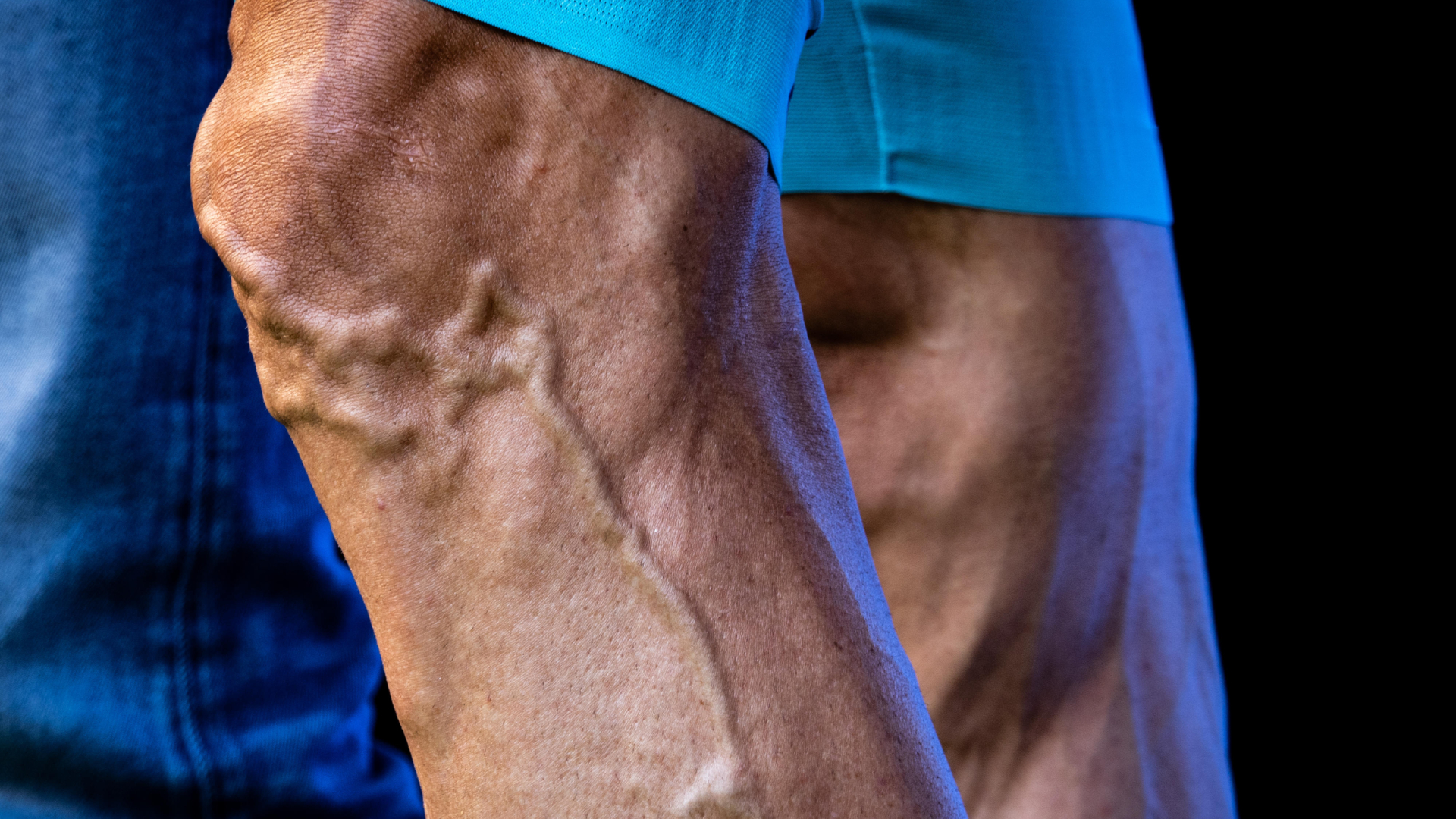
There are certain nagging questions in cycling that have a tendency to generate conflicting opinions and a confusing array of different views. In this ASK THE EXPERT series from Cycling Weekly’s print edition, we seek to clear up confusion by seeking out the experts best qualified to provide, if not the final word, then at least authoritative advice supported by verified expertise.
Veins are a type of blood vessel that form a vital component of the circulatory system. They play a crucial role in the circulation of blood, ensuring the efficient return of deoxygenated blood to the heart and facilitating the continuous functioning of the body's organs and tissues. Cyclists often have more prominent leg veins. Here we explained the science behind why Tour de France rider's legs are so veiny, but how can cyclists tell the difference between a healthy vein and one that may require treatment? We called on Dr Omar Abu-Bakr to take us through what you need to know...
Varicose veins are enlarged and swollen veins that occur in the legs and feet. Varicose veins form when the valves within the veins do not function properly. These valves are responsible for preventing the backward flow of blood, aiding in the upward movement of blood towards the heart. When the valves become weak or damaged, they are unable to effectively regulate blood flow, causing blood to pool in the veins. Key symptoms include swelling, pain, discolouration of the skin, itching, and redness – though some people don’t experience symptoms.
If left untreated, varicose veins can lead to serious health implications, such as deep vein thrombosis (DVT). It’s therefore important to be aware of your vein health and seek treatment if you suspect or know you have varicose veins.
Cycling and vein health
The repetitive movements of the legs involved in cycling can contribute to the development of prominent leg veins, including varicose veins. Several factors may contribute to this. The increased blood flow to the legs during cycling puts pressure on the veins, which can lead to the dilation and expansion of the vein. The pressure within the veins increases during cycling, particularly when the cyclist is pushing hard or pedalling uphill. This can cause the veins to expand and become more visible.
Some individuals may have a genetic predisposition to developing varicose veins, which can be exacerbated by the physical demands of cycling. The risk of developing varicose veins increases with age, as the veins lose elasticity, and the valves weaken over time. While cycling can contribute to the development of varicose veins, it is also an extremely effective way to promote overall cardiovascular health and fitness, so healthy cyclists – at all levels of the sport – should not be overly concerned about developing them.
The veiny appearance often seen in professional cyclists’ legs is usually not a cause for concern and does not necessarily indicate varicose veins. The cause of veiny legs is primarily due to a combination of low body fat and increased blood flow to the legs during intense physical activity. This is not something to be alarmed about.
The following factors can help determine if a vein is normal or a cause for concern. Varicose veins are enlarged, swollen, and often twisted or bulging. They can appear as dark blue or purple veins beneath the skin, whereas normal veins appear straight, thin and are usually a blue/green hue. That said, normal veins may appear more prominent in muscular cyclists. Varicose veins may have a lumpy or rope-like texture to the touch. Normal veins typically have a smooth texture.
Varicose veins can cause symptoms such as aching, heaviness, throbbing, or discomfort in the legs. Itching, swelling, and skin changes (such as darkening or ulceration) can also occur in advanced cases. If you are at all concerned, it’s best to seek medical advice.
Preventative measures
Even if you are genetically predisposed to developing varicose veins, there are measures everyone can take to prevent them from forming. This includes staying hydrated, as dehydration can contribute to blood pooling and poor circulation in the legs, increasing the risk of developing varicose veins. Maintaining a healthy weight and consuming a healthy diet also helps prevent varicose veins. Particular food groups, such as antioxidants, omega-3 fatty acids, and protein are good for promoting vein health by improving blood flow, reducing inflammation, and strengthening the veins.
Cyclists can reduce the risk of developing varicose veins by taking breaks to stretch and move their legs, but should be reassured that they are already helping themselves. Exercise is an excellent way to prevent varicose veins. It's important to note that while prominent veins in cyclists are usually healthy and normal, if there are concerns about the veins or any associated symptoms, it is advisable to consult with a healthcare professional who can provide a comprehensive evaluation, make an accurate diagnosis, and offer appropriate guidance or treatment options if necessary.
In summary, prominent veins in cyclists’ legs are usually not a cause for concern and you should not panic just because your leg veins are visible and/or bulging. That said, if you have any unusual, new, or persistent symptoms that might indicate varicose veins, get them checked. Modern treatment is highly effective, minimally invasive and has high success rates – so it’s best to seek diagnosis and treatment as early as possible.
How to treat varicose veins?
Untreated varicose veins can lead to further health complications, such as DVT and leg ulcers. They can also cause a great deal of pain and discomfort, so it’s important to treat them as soon as possible.
There are various procedures to treat varicose veins, including echo-therapy treatment, microwave treatment, endo-venous laser ablation, radiofrequency ablation, microsclerotherapy, and more – some available on the NHS, some only privately. A vein specialist is able to guide the patient on which will be the most effective treatment in their individual case.
Different treatments have different recovery times, but modern advances in varicose vein treatments have given rise to fast recovery times and high success rates. What’s more, modern techniques hold a very low risk of recurrence – approximately 3-4% – whereas surgeries once commonly used to treat varicose veins, such as vein stripping, incurred a higher risk of recurrence, were more invasive and required longer recovery times.
Got a question you'd like us to pose to an expert? Email: david.bradford@futurenet.com
This full version of this article was published in the print edition of Cycling Weekly. Subscribe online and get the magazine delivered direct to your door every week.







